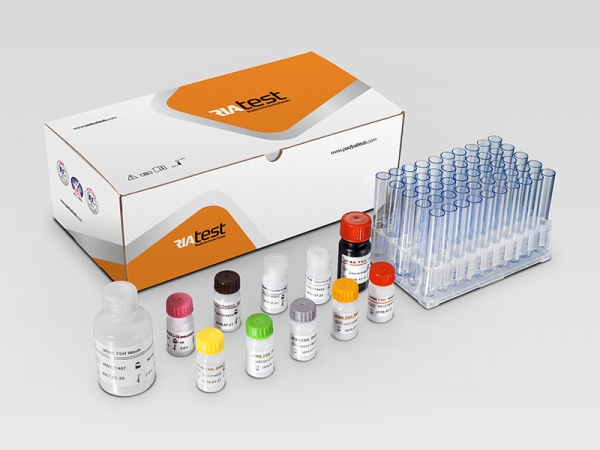| Name | FSH RIA Test |
| Full name | Human FSH RIA Test Kit |
| Category Name | Fertility RIA kits |
| Test | 100 |
| Principle | Immunoradiometric assay |
| Detection Range | 0-200 mIU/mL |
| Sample | 25µl Serum |
| Sensitivity | 0.09 mIU/ml |
| Total Time | ~45 min |
| Shelf Life | 45 Months from the manufacturing date |
FSH RIA kit description:
The Diagnostic Automation FSH RIA test kit is for the quantitative determination of follicle-stimulating hormone (FSH) concentrations in human serum
Materials provided with FSH RIA Test Kit:
1. Coated Tubes: Anti –FSH monoclonal Antibody (100 tubes)
2. Anti- FSH monoclonal antibody Labelled with I 125 (Tracer I125)
3. FSH test reference standard set, contains 0, 2.5, 5, 25,50, 100, 200. mIU/ml, ready for use
4. Control serum: FSH in serum with preservatives(1Vial, 0.5 ml)
Materials Required, not Provided:
1. Precision pipettes
2. Distilled or deionized water
3. Gama counter
Introduction
FSH (Follicle-stimulating hormone) is a glycoprotein heterodimer, consisting of two polypeptide units, alpha and beta that are non-covalently bonded. Alpha unit structure is similar to other glycoprotein hormones (LH, TSH, hCG). Beta subunit (FSH β), confers FSH specific immunologic action. FSH is secreted and synthesized by the anterior pituitary basophils. The hypothalamus releases gonadotropin-releasing hormone (GnRH), which stimulates the release of FSH from pituitary. Activity of the pituitary gland and the hypothalamus is become low and high by the concentration of circulating steroids (negative feedback). In females, FSH initiates follicular growth, specifically affecting granulosa cells. With the concomitant rise in inhibin B, FSH levels then decline in the late follicular phase. This seems to be critical in selecting only the most advanced follicle to proceed to ovulation. At the end of the luteal phase, there is a slight rise in FSH that seems to be of importance to start the next ovulatory cycle. FSH regulates spermatogenesis in men. Unlike estrogen, male hormones (androgens) do not reduce the concentration of FSH and feedback relationship provement is possible only through LH. Due to unknown reasons, FSH levels rise with azoospermia and oligospermia in men. Usually in immunoassay methods, the concentration of FSH reduces and LH levels show an increase in testicular tumors. It is thought that this falsely increasing in LH levels is suspended by interaction with hCG-like compounds that can be produced by testicular tumor.
Principle of the assay
Immune radiometric assay (IRMA) kit, evaluates FSH based on the one step non-competitive reaction. In this type of assay, the method employs two highly specific monoclonal anti- FSH antibodies which recognize two different epitopes of the molecule. One antibody is coated on solid phase (coated tube), the other, specific for the FSH and labelled with Iodine-125, is used as a tracer. Both of these antibodies react with FSH antigens which are present in standard, control serum and the sample. Unspecific materials are removed in the washing step. The amount of activity form in the tube has a direct relationship to the FSH concentration. FSH standards with known concentrations are tested with the unknown samples in which the concentration of unknown samples is achieved based on the standard curve of the counted amount against concentration of FSH.



